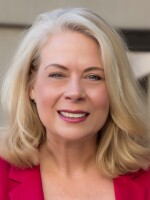
Catherine Collinson
President and CEO, Transamerica Institute and Transamerica Center for Retirement StudiesCatherine Collinson is the founding president and CEO of nonprofit Transamerica Institute and its Transamerica Center for Retirement Studies, and she is a champion for Americans who are at risk of not achieving a financially secure retirement. With two decades of retirement industry-related experience, Catherine is a nationally recognized voice on workforce, aging, and retirement trends. She was named a 2018 Influencer in Aging by PBS’ Next Avenue. In 2016, she was honored with a Hero Award from Women’s Institute for a Secure Retirement (WISER) for her tireless efforts in helping improve retirement security among women.
For Catherine Collinson's full bio, visit www.transamericainstitute.org/about-us/our-team#collinson
-
The U.S. population is growing older and the number of retirees is increasing. Since 2011, on average, 10,000 Baby Boomers have been turning age 65 every day and they will continue to do so through 2029. In its most recent survey of those ages 18 and older, nonprofit Transamerica Institute found that almost one in four individuals are now fully retired.
-
Often times in life, expectations and reality diverge. The weather forecast may call for rain but then it’s sunny all day. Or your map app says it will take 45 minutes to reach your destination, but an unexpected detour takes an hour and a half. Some things turn out better, others may turn out worse, and others may simply be totally different than expected.
-
November is National Family Caregivers Month, a time to honor the estimated 53 million unpaid family caregivers in the U.S.1 who perform an invaluable labor of love that often comes without a paycheck.National Family Caregivers Month is about celebrating caregivers, raising awareness of their issues, educating communities, and increasing support for caregivers. In that spirit, we are dedicating this episode of ClearPath – Your Roadmap to Health & Wealth SM to caregivers in the workplace.
-
In theory, having life insurance can be a means of helping to protect our loved ones and is typically a vital part of everyone’s financial planning. However, according to LIMRA, a leading life insurance trade association, half of American adults — representing 129 million people — say they don’t carry life insurance. Like so many financial topics, life insurance can also be confusing, resulting in consumers having misconceptions about it.
-
While many people enter retirement and never look back, there is an unusual pandemic-related trend that’s now occurring, and that involves retirees returning to work in what has been coined “unretirement.” According to the Federal Reserve Bank of St. Louis, more than 2 million Americans retired in the first 18 months of the pandemic, accounting for more than half of the people that left work at the same time. But since then, about 1.5 million retirees have gone back to work, according to an analysis of the Department of Labor data done by Indeed Hiring Lab.
-
Retirement is a time in life when people transition out of the workforce with more free time to enjoy life. But, when we do so, we are leaving our paychecks behind. We will need to live on income from Social Security, employer pensions and 401(k)s, and other savings and investments. For most people, this is far easier said than done.
-
Our retirement landscape is evolving due to population aging, increases in longevity, employer benefit trends, and looming reforms to Social Security. It is shifting so rapidly that many of the underlying assumptions about retirement differ across generations in the workforce.
-
Our retirement landscape is evolving due to population aging, increases in longevity, employer benefit trends, and looming reforms to Social Security. It is shifting so rapidly that many of the underlying assumptions about retirement differ across generations in the workforce.
-
Our retirement landscape is evolving due to population aging, increases in longevity, employer benefit trends, and looming reforms to Social Security. It is shifting so rapidly that many of the underlying assumptions about retirement differ across generations in the workforce.
-
Our retirement landscape is evolving due to population aging, increases in longevity, employer benefit trends, and looming reforms to Social Security. It is shifting so rapidly that many of the underlying assumptions about retirement differ across generations in the workforce.


